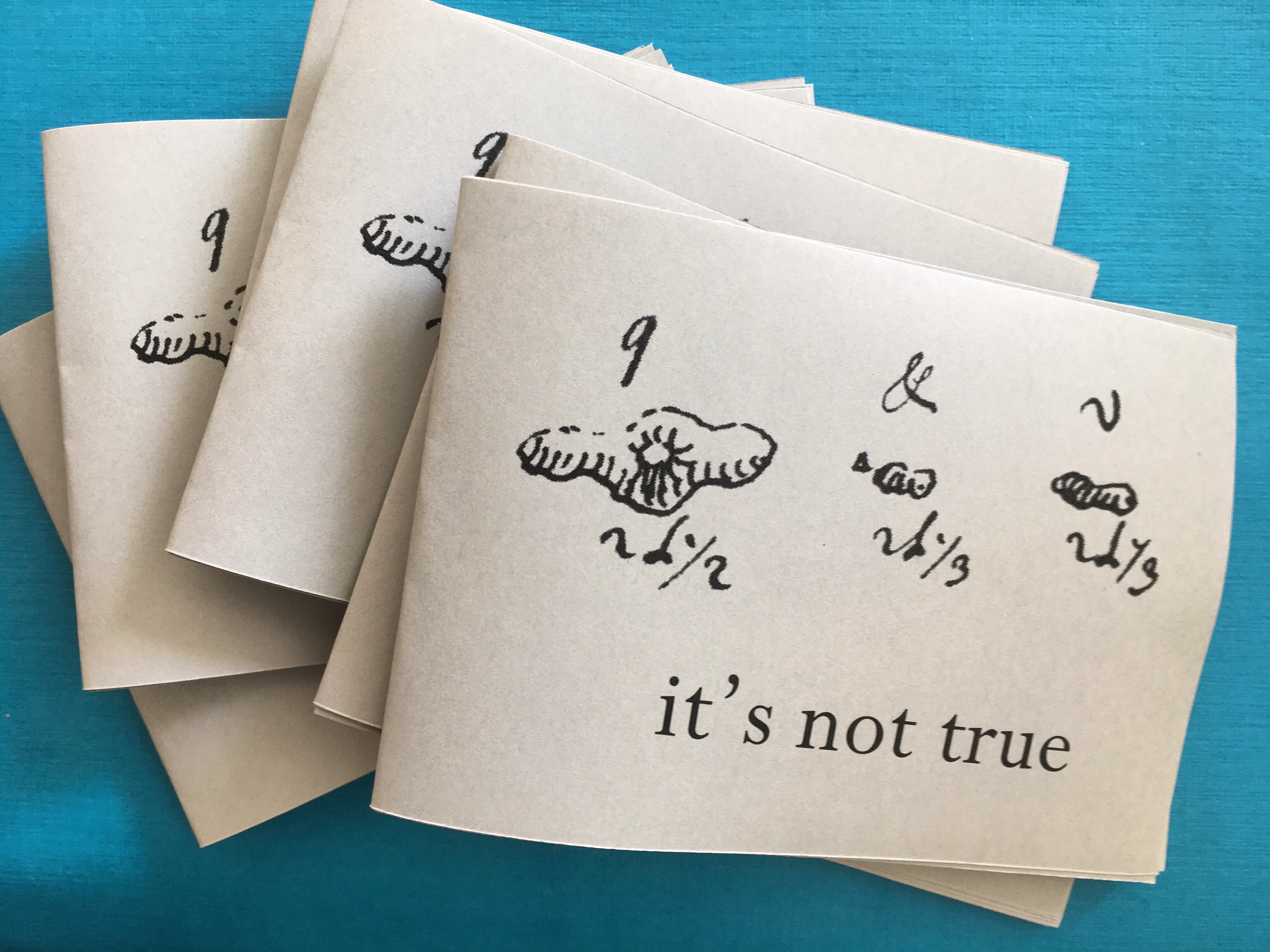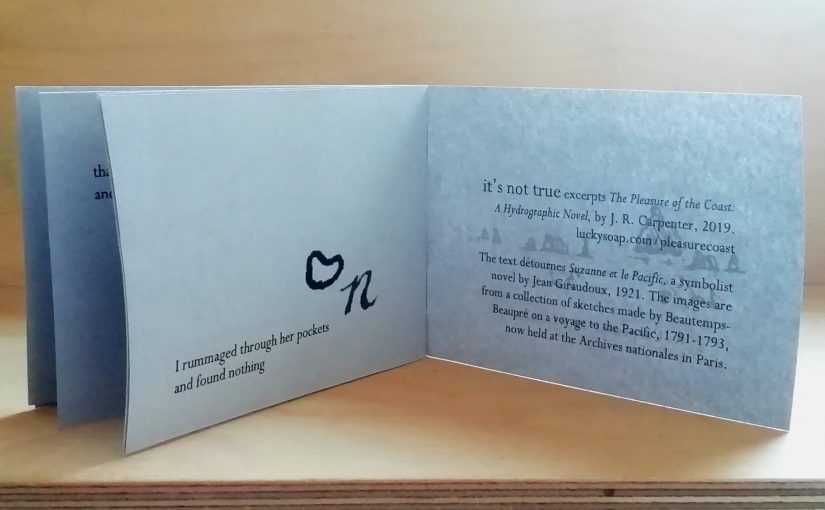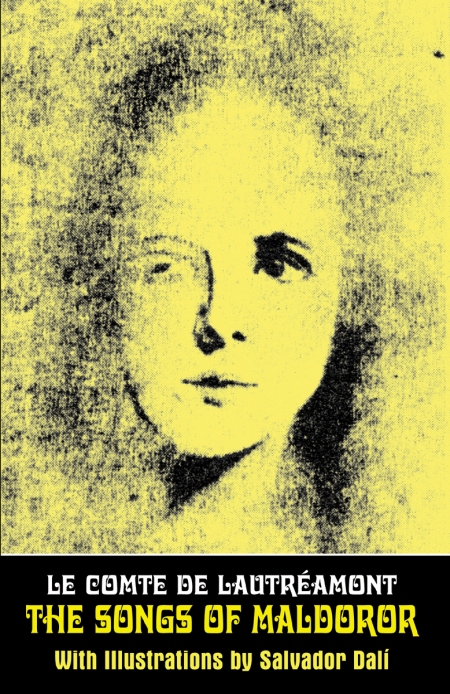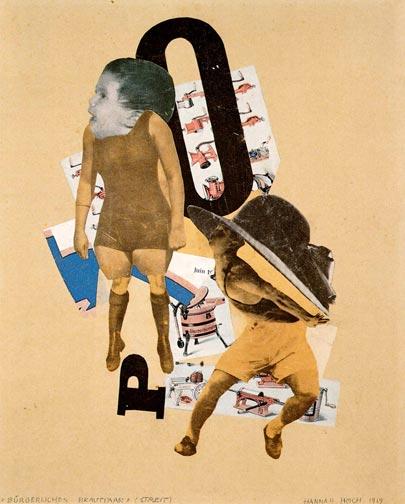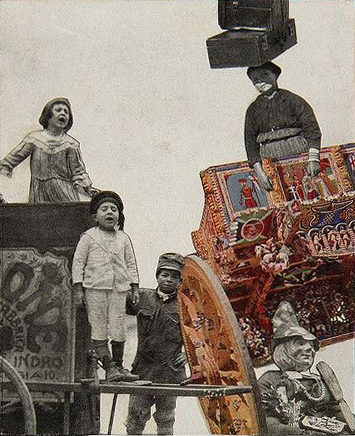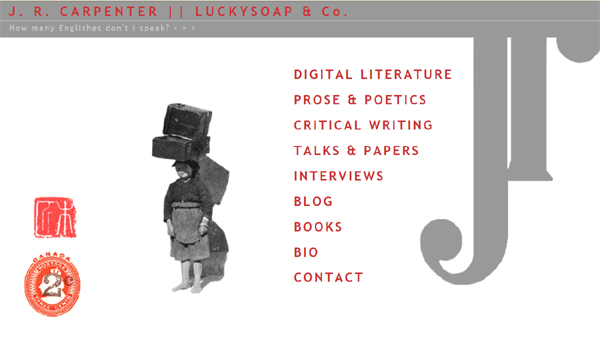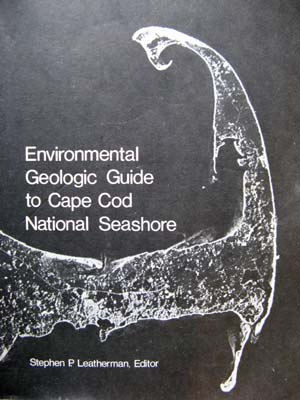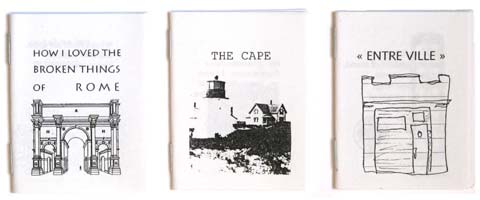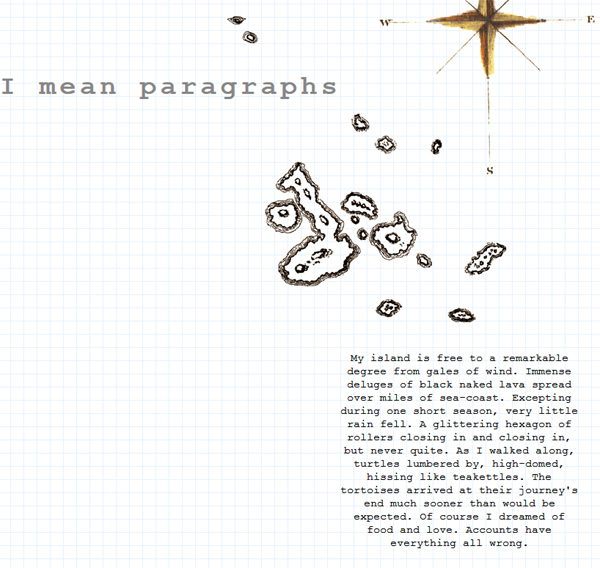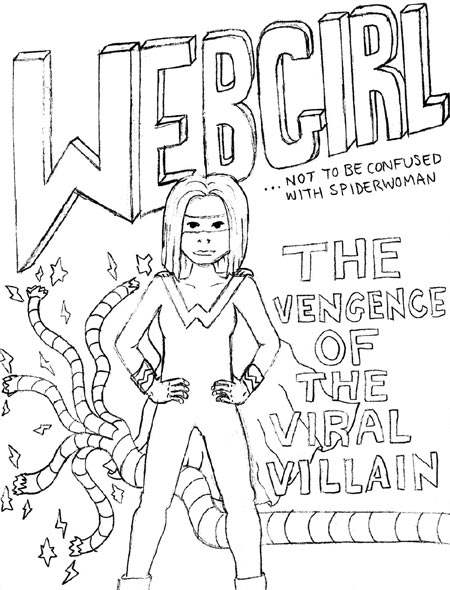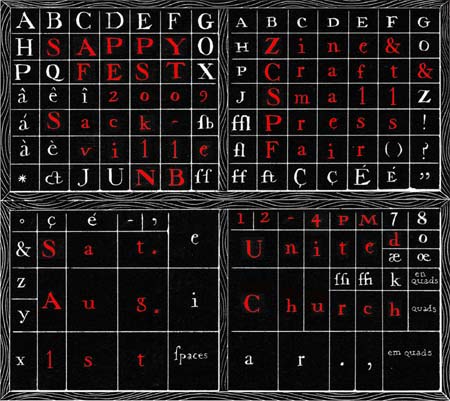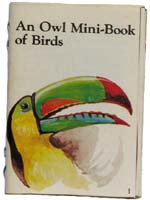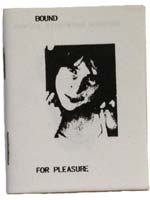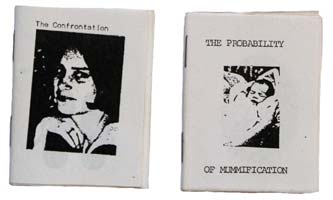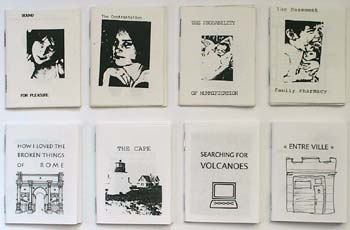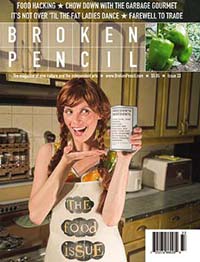If folk wisdom and the Internet are to be believed, a surprisingly high number of people fear public speaking more than they fear death. And unless Wikipedia is pulling my leg, the official term for the fear of public speaking is Glossophobia, from the Greek words glōssa, meaning tongue, and phobos, fear or dread. I have never been afraid of public speaking. Or private speaking. Talking is one of my favourite things to do. Rumour has it my first words were a whole sentence. As a toddler I kept up a constant commentary on every single thing I saw, heard, thought, ingested or excreted. In elementary school, Show & Tell was my best subject. In art school I lived for Critiques. It would have made sense to become a Professor, fond as I am of oration and debate. But I took a more independent route. And a quieter one. Most days I sit at home writing, speaking only occasionally to pose rhetorical questions to my dog. But every now and then I feel a bout of Show & Tell coming on. I get an overwhelming urge to talk to a whole room full of people at once and then there’s nothing for it but to start planning PowerPoint presentations in my head. If there is a Greek word for that, I don’t know what it is.
Around this time last year I decided I wanted to revisit some places in Nova Scotia, where I grew up, and that the best way to get there would be to get invited to give an artist’s talk. It seemed like a straightforward plan at the time. I spent most of 2007 pestering and cajoling professors and gallery directors at universities across Nova Scotia to hook me up. By mid-fall I’d talked my way into speaking engagements at Acadia University, Dalhousie Art gallery and NSCAD. But, as the title of this blog may suggest, non-stop talking leads to slip-ups sometimes. Lapsus Linguae is Latin: lapsus, meaning a lapse or a slip, and linguae, meaning tongue. Just days before embarking on this Show & Tell Tour of Atlantic Canada, I came down with a vicious sore throat and promptly lost my voice. I’m pretty sure the Greek word for that is ironia, meaning irony.
I immediately started reading way too much into the situation. Was this loss of voice a premonition of failure to come? Or was it an echo of the voiceless past reasserting itself? Acadia University is in Wolfville, Nova Scotia, where I went to Elementary School for grades four and five. I was regularly shushed in and out of class and however much I loved Show & Tell, my exhaustive focus on Tell over Show won me few fans and continues to plague my fiction writing to this day. Either way, I was going to get my voice back.
I stayed in bed for two days. I ate so much raw garlic that I was apologizing for my breath even in emails. Through sheer force of will I refrained from talking. The date of my departure dawned sunny and clear, which I took as a good sign. My chronically late mother-in-law arrived on time to drive me to the airport. Another good sign. I decided that if I could explain the topic of my upcoming talks to her – in French, on the Metropolitan Autoroute, in between divining directions and watching for hidden highway signs – then there was some hope that the talks would go over well. I don’t know if she understood exactly what the talks would be about, but she got it loud and clear that I would be paid for them and this impressed her. We only almost died three times during the twenty-five minute drive, which I took as a blessing from on high as usually her old-lady driving statistics average out much nearer the near-death side. We arrived at the airport early and in one piece. I had no problems at security and the flight was uneventful. I recommend to anyone with a fear of flying, or aerophobia, to get a lift to the airport with my mother-in-law. That will put things into perspective.

My first hour in Nova Scotia was spent in the airport waiting for Jon Saklofske, my colleague from Acadia; his carpool schedule and Air Canada’s did not quite correspond. I bought a coffee from a grim Arrivals area café for the free wireless Internet access with every purchase, but no matter how many times I entered the network key (long as my arm) I could not connect. I took this to be a very bad sign (as I had just been flown in to present Internet-based work) until I realized that no one else in the café could connect either. That cheered me right up. I went to sit near the exit where Jon would soon (fingers crossed) miraculously appear. A spectacularly fuchsia sunset ensued. Beautiful, but vaguely post-apocalyptic. Unsure how to read this sign I decided: When in the Maritimes, aphorize as the Maritimers do. Red at night, sailor’s delight. All good.

Jon showed up right on time – yet another good sign – but there was a funky smell in his van – not good at all. I promised not to post any information on the Internet about this smell, a promise I aim to keep in deference to how much driving me around he and his wife did in the few days I stayed with them. Besides, the smell quickly abated once we ganged up on it and accused it of being a burnt smell rather than a rotten one, thus mechanical in nature rather than satanical as initially suspected. Whoops! I guess I’ve gone and written about the smell after all. Sorry Jon, lapsus linguae.
We drove through the dark. Each green highway sign we passed inducing a wave of place-name nostalgia in me: Hammonds Plains, Bog Road, Nesbitt Street! Jon loves to talk just as much as I do and we had a lot of catching up to do. What little voice I had was soon gone. That night I dreamt I was teaching Jon’s six-year-old son sign language. In the morning Jon’s wife informed that their son already knew sign language, which was a huge relief.
I spent a day wandering around Wolfville, my old hometown, scanning for signs of recognition and scrutinizing signifiers of change, all the while worrying over my voice worse than an opera singer’s understudy. Some things were more exactly the same than others. Somehow I’d completely forgotten about a store called The Market where I used to hang out as a semi-delinquent teen. Walking in I had the closest thing to an acid flashback possible for someone who’s never done acid.

No wonder the secretary at the Wolfville Elementary School seemed highly suspicious of me. I said I wanted to take a look at my old classrooms. She quizzed me: What years were you here? What her skepticism a sign that people never leave here, or that they never come back? Who were your teachers, she wanted to know? I’m so bad with names for a moment I drew a blank, which didn’t help my case. Mr. Thompson? I was guessing. Yes, he’s still here, she said, and grudgingly granted me a visitor’s pass.
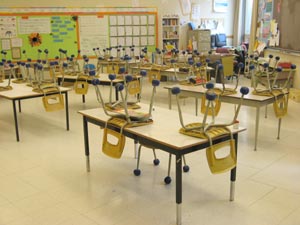
I never went to Acadia but when I was about ten my mother did a stint there. As far as all parties were concerned, the vending machines in the Acadia Student Association Building made a perfectly good babysitter. In grade eleven my best friend Dana Cole and I split the cost of a library card at Acadia’s Vaughn Library. We used to drive in regularly from Windsor to check out books. What a bunch of dorks. Paid off though, I guess. She’s a PharmD now and Acadia had just flown me in to give an artist’s talk.

The day of my talk dawned incredibly early. Due to Jon’s cruel and unusual teaching schedule we were at Acadia by 8:30AM. I spent most of the day holed up in his office in the English Department doing my best impersonation of a Romantics Professor. I broke character for about an hour to go speak to Andrea Schwenke Wyile’s Graduate Honours English class, Beyond Words: Graphic Literary Art & The Representation of Ideas. It’s always a bit of an ontological struggle to lecture to a class I wish I were taking, but the students asked good questions and as far as I could tell it went well. I was tuckered out afterward. I had yet to develop a fear of public speaking but was beginning to worry about public sleeping. Narcolepsy, that’s a Greek word too, isn’t it? To be on the safe side I took a power nap on Jon’s office floor.
My talk was scheduled for 7PM in a state of the art auditorium in the K. C. Irving Building, which certainly wasn’t around back in the day. I wonder if my life would have turned out differently if, instead of being left to fend for myself over by the ASA vending machines, I’d been brought up by the K. C. Irving’s fireplace, brass lamps and leather couches. In the upstairs atrium the water falling into stone fountains recessed into the Naples Yellow walls sounded exactly like hundreds of fingers racing over laptop keyboards in the quiet of a darkened lecture hall. Downstairs the auditorium soon reached a respectable capacity and my talk was underway.

For all my worrying over losing my voice, and despite a slight fever and a horribly painful patch of eczema blossoming on my right eyelid, once I got going everything was fine. Did my bit about how I couldn’t wait to get out of rural Nova Scotia and then the minute I got to Montreal I started making work about rural Nova Scotia and everyone laughed. Phew. Said how the interface of The Mythologies of Landforms and Little Girls was inspired by those tourist restaurant placemats with maps of Nova Scotia on them and everyone nodded knowingly. All right then. Moved on to the more recent work. The videos in How I Loved the Broken Things of Rome were loading deadly slowly, but whatever, it kind of fit with the ancient themes in the work so I talked around it. I was in full swing, right smack dab in the middle of Entre Ville, when the projector conked out. The screen went black and my mind went blank. What the hell’s the Greek word for that?
A conversation is a journey, and what gives it value is fear. You come to understand travel because you have had conversations, not vice versa. What is the fear inside language? No accident of the body can make it stop burning.
Anne Carson, The Anthropology of Water
You never really know what your worst nightmare is until you’re in it. I’d been so worried about not being able to speak that it never occurred to me I’d wind up with nothing to show for myself. I tried imagining the audience in their underwear. That was no help. Jon and I pushed all the buttons on the lectern’s consol to no avail. You’d better go call someone, I said. He bounded out of the auditorium. I just stood there. Deer in the headlights, only there was no headlight. Think, I told my brain. Think.
For reasons never previously clear to me I’ve always traveled with printouts of the full texts my electronic literature projects are based on. So, I said to the audience. We were just looking at Entre Ville… I happen to have the poem it’s based on here… How about I read it? And then all of a sudden we had a good old-fashioned poetry reading on our hands. Which was fairly ironic considering it was the English Department that had brought me in. And if there were any sceptics of electronic literature in the room, all their most firmly held conviction had just been proven true.
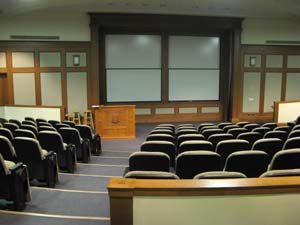
By the time I’d finished reading Entre Ville Jon had gained access to the control room in the back of the auditorium. I could see him in there frantically talking on his cell phone. Look, I said to the audience, when what I really meant was listen. If anyone wants to storm out right now that’s fine with me. I won’t take it personally. I’ll just blame the projector. But if anyone’s interested in staying, I have some more stories here… No one left. So I started reading Sniffing for Stories and tried not to look toward the control booth where Jon was still on the phone, gesturing frantically, and pushing buttons all over the place in a manner reminiscent of Chewbacca co-piloting the Millennium Falcon. At some point the main projector screen rose up into the ceiling. Okay. A minute later another smaller screen descended. A television show came on briefly – it seemed to be about home renovation – and then that too disappeared. Then – boom – we were back to my web site. I was still reading Sniffing for Stories so I got that text up on screen and kept right on reading.
All things considered, the rest of the talk went exceptionally well considering how horribly wrong that wrong patch went. People stayed and asked questions and came up after and bought mini-books as if nothing humiliating at all had happened. Between the auditorium and Jon’s office he filled me in on the phone conversation he’d been having in the control room. Turns out the one night I’m giving a talk on web-based electronic literature they’re doing maintenance on the bandwidth. No wonder my Quicktimes were loading stone-slow. During the taxi ride home we had elaborated the catastrophic parts into the stuff of legend. And speaking of the Stuff of Legend, our taxi driver was a grizzled old dude with long hair and a long beard and he was playing the most awesome music so finally Jon said, Man! I’ve got to ask, what have you got on in here? The driver smiled beatifically: The Essential Chaka Khan, man. The Essential Chaka Khan.
Okay, so I guess now we know what the soundtrack will be in the scene where Jon and I meet up again twenty years from now in a hotel bar at a conference somewhere and start reminiscing about the time we convinced Acadia to fly me in for a talk and then the Internet went down and the projector bulb blew and a small fire started in the lectern consol and the control room filled with smoke and porn started playing on the big screen and the police came and raided the joint cause the whole audience was in their underwear and then a woman gave birth in the isle.
But at least I didn’t lose my voice.
. . . . .
